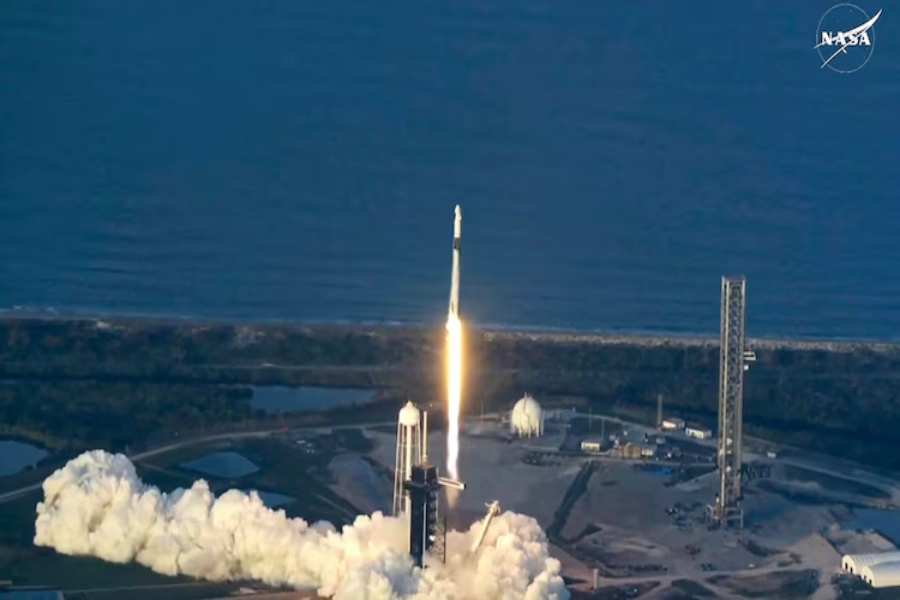NASA’s SpaceX Crew-10 mission has successfully undocked from the International Space Station (ISS) and is now en route back to Earth, carrying a crew that includes two astronauts whose return was delayed for months. The mission, which had initially planned for a brief stay on the ISS, was extended due to safety concerns with Boeing’s Starliner spacecraft.
The Crew Dragon spacecraft separated from the ISS at 1:05 a.m. ET on Tuesday, executing a series of departure burns before heading toward Earth. “Dragon separation confirmed!” SpaceX announced on social media. “The spacecraft will now execute a series of departure burns to move away from the @Space_Station. Dragon will reenter the Earth’s atmosphere and splash down in ~17 hours.”
NASA astronauts Sunita “Suni” Williams and Butch Wilmore, who were originally scheduled for a short-term mission, are now finally on their way home after a prolonged nine-month stay on the ISS. Their return was delayed after NASA determined that the Boeing Starliner spacecraft, which initially carried them into orbit, was unsafe for human travel due to technical issues. As a result, the Starliner was returned to Earth uncrewed, and Williams and Wilmore continued their mission aboard the space station as part of the Crew-9 team.
The Crew-10 mission, which lifted off from Kennedy Space Center on Friday evening aboard a Falcon 9 rocket, reached a velocity of 17,500 mph as it ascended into orbit. It successfully docked with the ISS just before midnight on Saturday. NASA astronaut Anne McClain is leading the Crew-10 team as mission commander, with NASA’s Nichole Ayers as pilot, along with Japan Aerospace Exploration Agency (JAXA) astronaut Takuya Onishi and Roscosmos cosmonaut Kirill Peskov. Their arrival allows for a seamless transition, ensuring that ongoing research and maintenance continue without disruption.
As Williams and Wilmore prepared to depart, they exchanged farewells with fellow astronauts aboard the ISS. “On behalf of Crew-9, it was a privilege to call [the] station home,” said Dragon commander Nick Hague, reflecting on their extended mission.
NASA has reiterated that while Williams and Wilmore’s mission extended far beyond their original timeline, they were never considered “stranded.” Instead, the space agency emphasized that their continued stay aboard the ISS was carefully planned for safety. Throughout their time on the station, multiple spacecraft—including a Roscosmos Soyuz and the SpaceX Crew Dragon “Freedom”—remained docked and available for emergency use if needed.
The extended stay proved historic for Williams, who broke the record for the most spacewalking time by a woman. Over her career, she has spent a total of 62 hours and 6 minutes outside the ISS, further cementing her legacy in space exploration.
NASA’s decision to prioritize astronaut safety by delaying their return underscores the challenges and complexities of modern spaceflight. With the Boeing Starliner facing setbacks, the success of SpaceX’s Crew Dragon program continues to highlight the company’s role in ensuring reliable transport to and from the ISS.
As the SpaceX Crew Dragon Freedom prepares for reentry, NASA expects Williams, Wilmore, and the two other Crew-9 astronauts to return safely to Earth by Wednesday. The completion of this mission marks the end of a significant chapter in ISS operations, demonstrating both the adaptability of the astronauts and the continued evolution of commercial spaceflight partnerships.
Meanwhile, Crew-10 will embark on an ambitious schedule of over 200 scientific experiments and technology demonstrations, furthering research that will support deep-space exploration and potential missions to the Moon and Mars. As NASA looks toward the future, the agency remains committed to innovation, safety, and pushing the boundaries of human space travel.

